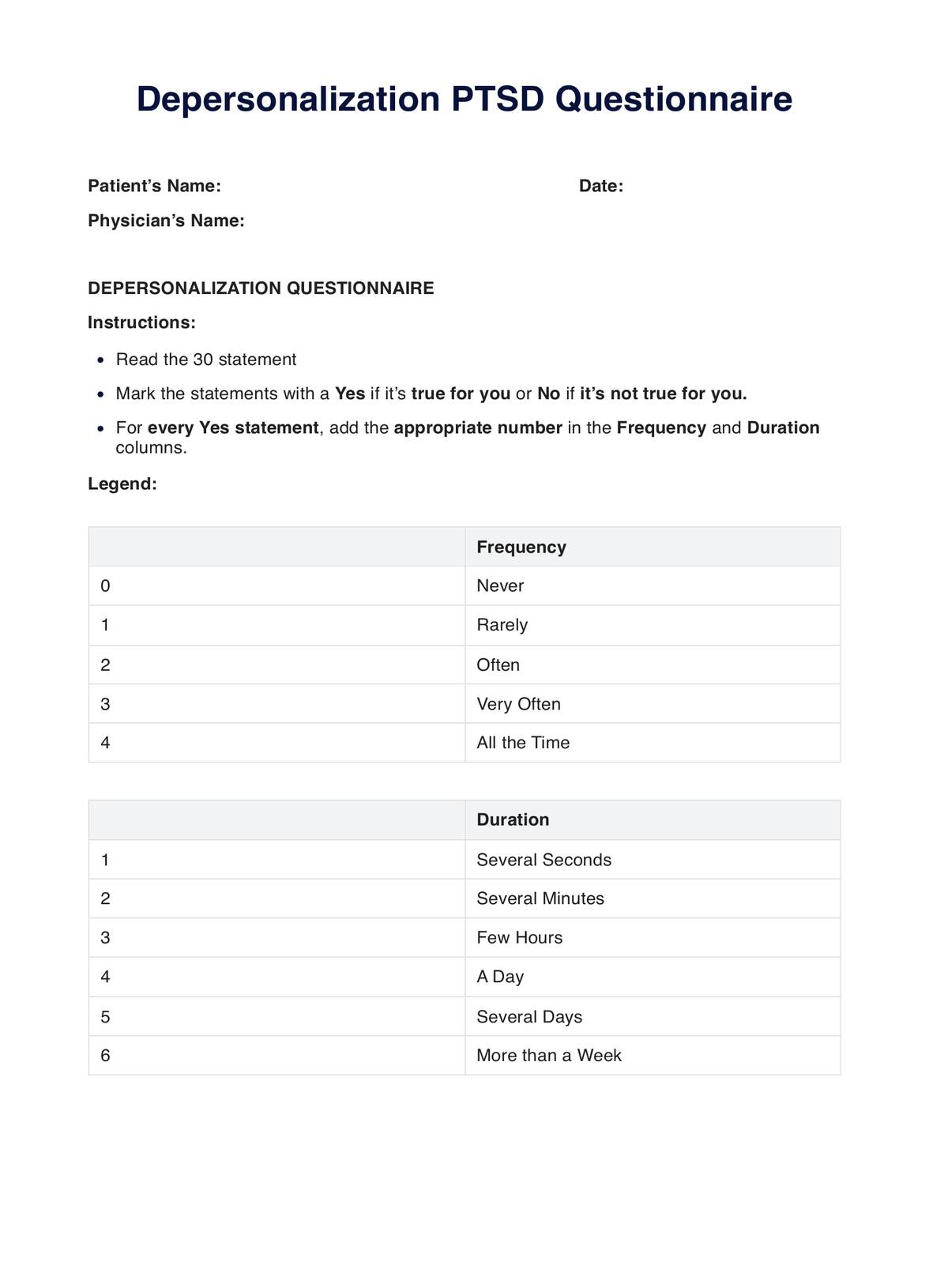It can take around an hour to answer, score, and interpret the results of the Depersonalization PTSD Questionnaire.

Depersonalization PTSD Questionnaire
Use the Depersonalization PTSD Questionnaire to evaluate the severity of their trauma and depersonalization symptoms based on their presence, frequency, and duration.
Depersonalization PTSD Questionnaire Template
Commonly asked questions
It can help clients be more aware of the depersonalization symptoms. On the other hand, it can also help the referring physician assess the severity of the patient??s depersonalization symptoms for diagnostic or treatment formulation purposes.
It??s best used when the referring physician suspects or is aware that the client is experiencing depersonalization symptoms after a traumatic event and when monitoring the effectiveness of a particular treatment approach.
EHR and practice management software
Get started for free
*No credit card required
Free
$0/usd
Unlimited clients
Telehealth
1GB of storage
Client portal text
Automated billing and online payments











